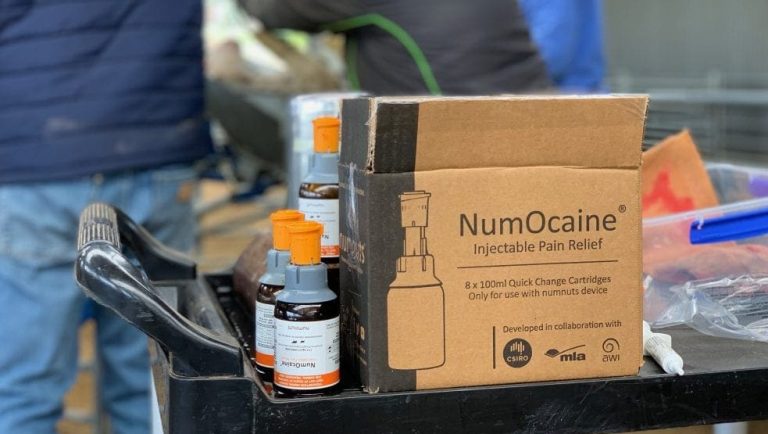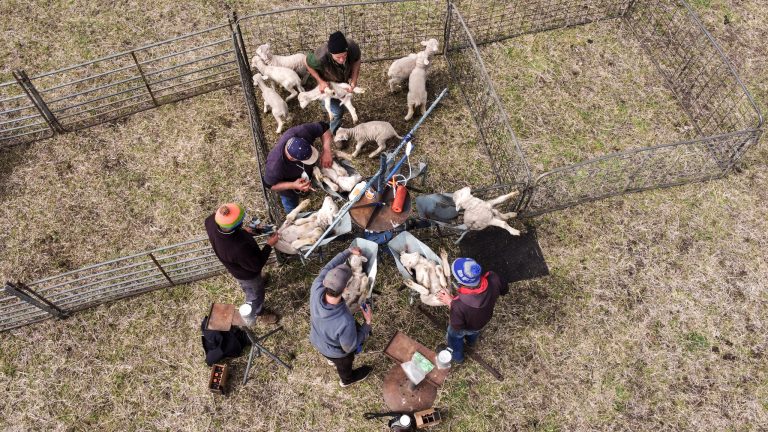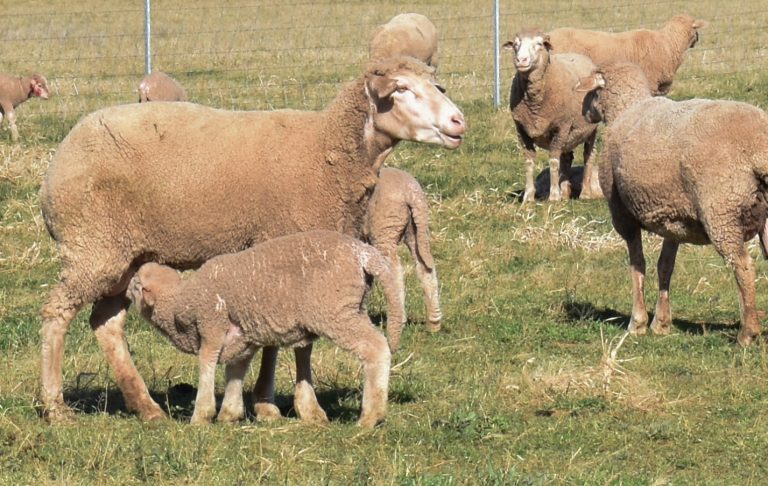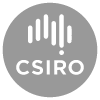Not all pain meds are the same, as your lambs will tell you
Most of us recognise the difference between a local anaesthetic and an anti-inflammatory.
Just imagine: you’re about to undergo a minor surgical procedure and you’re offered a couple of ibuprofen. You’ll probably have something to say about this, as you know that even the strongest painkiller on earth can’t help you quickly enough when the surgeon’s already approaching. You’d clearly prefer a local anaesthetic, which will quickly numb the area in question.
It’s horses for courses where pain medications are concerned. There’s a range of medications you can give your lambs, but as they fall into two different groups, they work in different ways and need to be administered at different times.
In short:
- Local anaesthetics take effect very quickly, but are short lasting.
- Anti-inflammatories (analgesics) are slower to take effect, but are longer lasting.
Local Anaesthetics
Local anaesthetics are immediately numbing. This means they block pain, so there is no sensory function in the area. For surgical or invasive procedures, they are usually injected close to the site in question, so the maximum effect occurs where it’s needed.
- NumOcaine® is injected with the Numnuts® device before ring castration and tail docking. This medication contains 2% lignocaine.
- Tri-solfen® is sprayed onto open wounds. It contains 4% lignocaine and 4.2% bupivacaine.

Anti-Inflammatories (Analgesics)
Analgesic products, also known as Non-Steroidal Anti-Inflammatory Drugs (NSAIDs), alleviate pain and inflammation. They also reduce the possibility of infection by reducing inflammatory fluids.
These are slower acting, as they need to enter the system. Following lamb marking, analgesics relieve the pain that occurs after the procedure and during the healing process. In its Pain Mitigation in Sheep factsheet, Meat and Livestock Australia states that NSAIDs take 15-30 minutes to take effect, with pain relief then lasting up to 9 hours.[1]
- Buccalgesic® contains the medication meloxicam and is given orally.
- Metacam 20® also contains meloxicam and is injectable.
Best Practice in Ring Marking
In its training guide for best practice at lamb marking, Australian Wool Innovation recommends a 2-step use of pain medications during painful husbandry procedures.[2] A local anaesthetic should be used for immediate and early relief, while an anti-inflammatory (analgesic) should be used for later, longer lasting pain relief.
Research conducted by CSIRO shows that acute pain behaviours from ring castration and tail docking are greatest in the first 30 minutes after application, as the blood supply is initially restricted.[3] This means that for ring marking, a local anaesthetic provides rapid pain relief in the timeframe required.

And If You Don’t Use a Local Anaesthetic?
There is nothing to gain by using an anti-inflammatory in place of a local anaesthetic, as they are different types of medication. The delayed effects of an anti-inflammatory means it is likely that the lambs will experience acute pain during the first 15-30 minutes following ring application. This compromises lamb welfare.
Currently, NumOcaine delivered through the Numnuts device is the only local anaesthetic available approved for ring marking lambs. Research shows it to be effective within 2 minutes of injection [4].
The Benefits of NumOcaine
Extensive scientific studies have shown lignocaine to be the safest local anaesthetic available, and therefore the most suited to safe administration in our hand-held Numnuts device in a 2% solution.
The CSIRO study found that when 1.5 mL of NumOcaine is administered to the tail or scrotum of 2-4 week old lambs, pain relief is provided for 60 minutes after the ring application. Researchers recorded a significant 68% reduction in pain-related behaviours for the first 20-50 minutes following ring marking, with faster mothering up and reduced mismothering.
After 60 minutes, an anti-inflammatory (analgesic) medication, also administered during marking, will have had time to take effect.

To date, 1,000 animals have received NumOcaine (2% lignocaine) in Australian studies run by CSIRO and the University of Melbourne, with no adverse toxic effects recorded. This number of animals more than meets requirements for statistical validation and there is every reason to be absolutely confident in these results. Australian licensing bodies have accepted this body of research as evidence that lignocaine is safe at the recommended dose, when used with the Numnuts device.
With 2.2 million doses of NumOcaine administered on farm since launch, no toxic adverse effects have been reported to the APVMA or other regulating bodies.
References
[1] Pain mitigation in sheep, Fact Sheet. Meat and Livestock Australia.
[2] Plan, Prepare and Conduct Best Welfare Practice Lamb Marking Procedures – Training Guide, Australian Wool Innovation
[3] Small AH, Jongman EC, Niemeyer D, Lee C, Colditz IG. Efficacy of precisely injected single local bolus of lignocaine for alleviation of behavioural responses to pain during tail docking and castration of lambs with rubber rings. Res Vet Sci. 2020 Dec;133:210-218. doi: 10.1016/j.rvsc.2020.09.025. Epub 2020 Oct 2. PMID: 33017801.
[4] Cottrell, D.F., Molony, V., 1995. Afferent activity in the superior spermatic nerve of lambs – the effects of application of rubber castration rings. Vet. Res. Commun. 19, 503–515.



